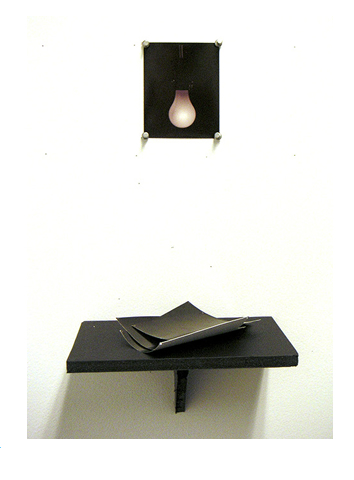





The image of a lightbulb, contact-printed on gelatin-silver printing-out paper, dims seamlessly to black over the course of several hours. The process is so slow that it is impossible to 'see' it, unless the viewer can hold it in their memory and return. The photograph dissolves to black and is replaced, the old images accumulating on the shelf below. As viewers stop and pick up the discarded images to see what they are, the oils in their hands interact with the surface of the paper, leaving indelible fingerprints behind.
I was interested in creating a photograph that could be time-based. This singular image becomes a self-contained animation. Each viewer sees a different picture, and the image itself eventually dissolves, leaving behind only the paper.
Much of what we think of as a photograph is denied by this work. The image is not fixed, but changing. The object depicted is not specific (it is a universally available consumer good, easily replaceable, much like the picture), though the experience of viewing it is. The photograph loses its role as commodity, the image is detached from its medium, and the still becomes an animation.
(Click on the image for an animation of the process)
 |
 |
 |
 |
||||
 |
|||||||
 |
|||||||